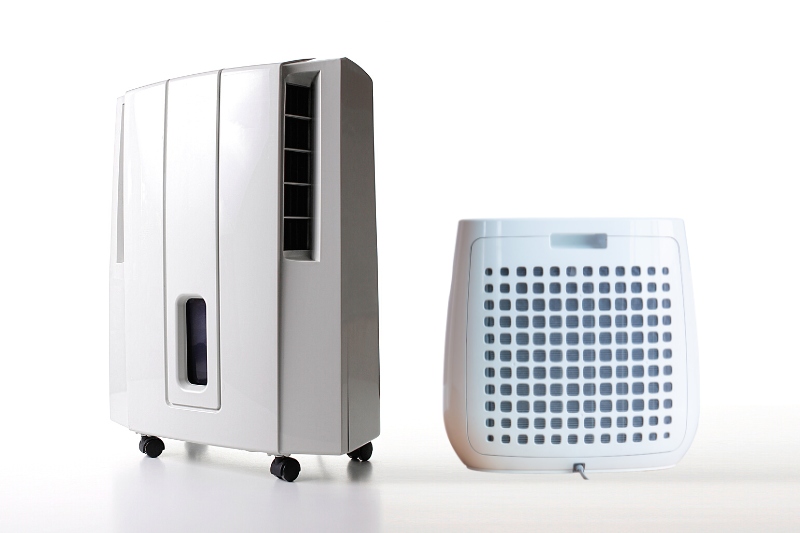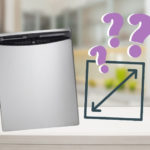Drying clothes indoors is necessary for many, whether due to rainy weather, lack of outdoor space, or personal preference.
However, this process often raises indoor humidity levels, potentially causing discomfort and leading to issues like mould and mildew.
The solution to maintaining a balanced indoor environment while speeding up the drying process is using a dehumidifier. However, choosing a suitable dehumidifier capacity is crucial for effective results. So, what size dehumidifier do you need for drying clothes?
Here, we explore the vital factors that determine the appropriate dehumidifier size for drying clothes, step-by-step instructions to make an informed decision, and why you should use a dehumidifier during indoor drying.
What Size Dehumidifier Do You Need for Drying Clothes?
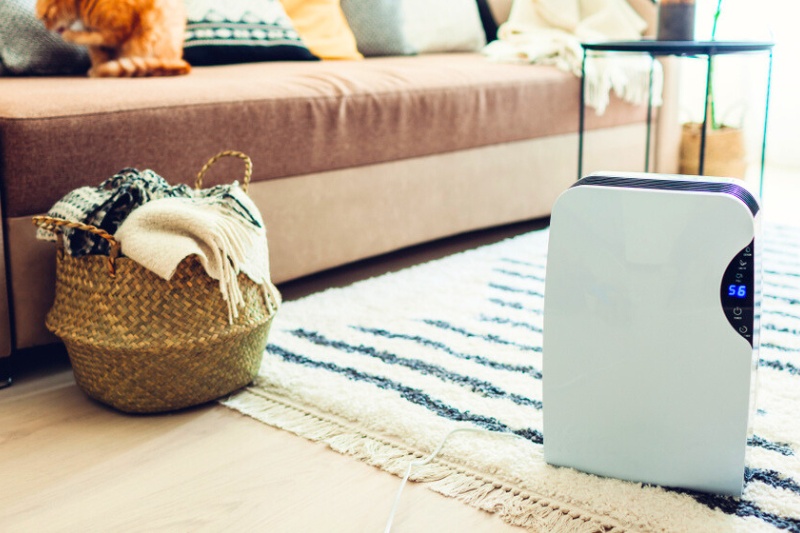
The size of the dehumidifier you need for drying clothes depends on several factors, including:
- The size of the room or space where you’ll be drying the clothes.
- The existing and desired humidity levels in your home.
- The amount of laundry being dried at any one time.
Below are some steps to help you determine the appropriate size dehumidifier for your needs. If you’re still unsure about size after reading these, opting for a slightly larger dehumidifier is often better to ensure adequate moisture removal—especially when drying clothes indoors.
1. Calculate the room’s square footage
Manufacturers often provide sizing guidelines based on the square footage of the room in which you’ll use the dehumidifier.
To calculate the square footage of your drying space, measure the length and width of the room in feet. Then, multiply these measurements to determine the square footage:
- Length x width in feet = Square footage
Having calculated the size of the room, compare it to the recommended dehumidifier capacities listed below.
The value in litres refers to the amount of moisture the unit removes from the air in 24 hours.
As you can see, the bigger the room, the larger the dehumidifier capacity should be.
- Small rooms (under 1,000 square feet): 12 to 15 litres
- Medium rooms (1,000 to 2,000 square feet): 15 to 25 litres
- Large rooms (2,000 to 4,000 square feet): 25 to 40 litres
- Very large rooms (4,000+ square feet): 40+ litres
Top Tip: The above list is a rough estimate of dehumidifier sizes vs moisture removal rates. Manufacturers often provide sizing charts that recommend appropriate capacities. Refer to these charts for more specific information on finding a suitable dehumidifier size.
2. Determine the desired humidity level
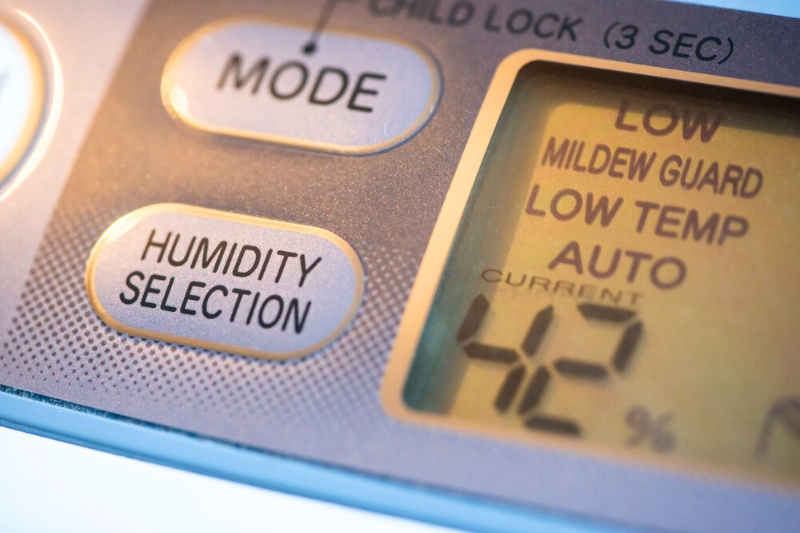
Using the current and desired humidity levels in your home is an excellent approach to help you choose the correct size dehumidifier, especially if your goal is to dry clothes faster and maintain a comfortable indoor humidity level.
Here’s a step-by-step guide:
- Use a hygrometer to measure the current relative humidity (RH) level in the room where you’ll be using the dehumidifier. Note down this reading—you’ll need to refer to it later.
- Decide on the desired relative humidity level you want to achieve. For drying clothes, 30% to 50% RH is typically recommended. Higher humidities are okay – drying clothes at 90% humidity is possible – but it takes far longer.
- Subtract the desired humidity level (step 2) from the current humidity level (step 1) to determine the excess humidity you want to remove. This will give you an idea of how much moisture needs to be extracted from the air.
- Manufacturers provide dehumidifier sizing guidelines based on daily litre removal capacity. The more moisture you need to remove (i.e. the bigger the number calculated in step 3), the larger your dehumidifier capacity will need to be.
- As your dehumidifier will be used for drying clothes, consider the additional moisture generated during this process. Choose a slightly larger size to handle this extra moisture.
3. Consider laundry load
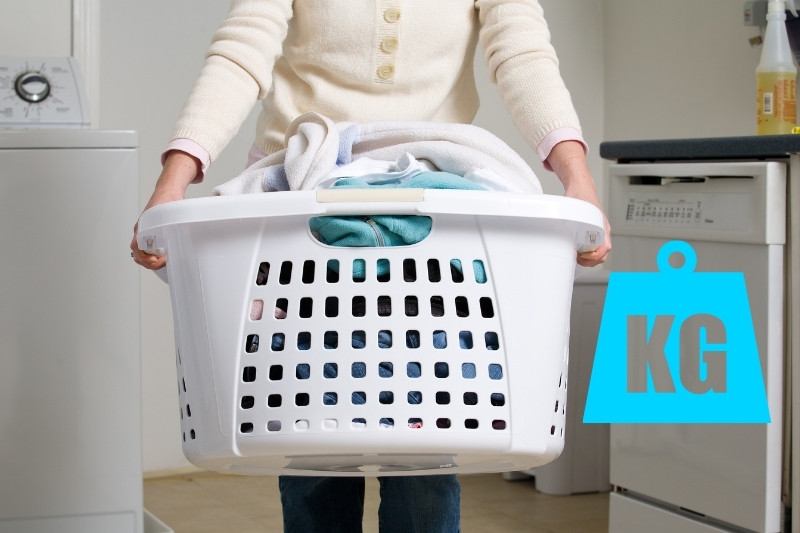
When you dry laundry indoors, the moisture from the wet clothes is released into the air, increasing the overall humidity levels in the room. Drying a larger amount of laundry will thus release more moisture into the air than smaller loads.
To maintain a comfortable humidity level, your dehumidifier must be capable of removing not only the existing moisture in the air but also the additional moisture from the clothes.
Therefore, the amount of laundry you are drying impacts the size of the dehumidifier you need—a larger load of laundry requires a dehumidifier with a higher extraction capacity.
For this reason, we recommend opting for a dehumidifier that is slightly larger than what is recommended based on room size and humidity levels alone.
It’s essential to consider the laundry load in conjunction with these factors when choosing an appropriate size and capacity.
How Do You Choose the Right Size Dehumidifier for a Room?

We’ve covered a lot of information about choosing the right size dehumidifier for drying clothes.
To summarise, follow the steps below and you will easily find a suitable capacity dehumidifier unit for your drying room:
-
- Measure room size: Measure the square footage of the drying room by using the equation length x width in feet = square footage.
- Determine desired humidity level: Decide on the desired relative humidity level for the room (e.g., 30% to 50%) and the difference between this and the current RH.
- Calculate moisture removal capacity: Refer to dehumidifier sizing guidelines provided by manufacturers based on square footage and desired humidity level.
- Consider additional load: As you’ll be drying clothes, opt for a dehumidifier with a slightly larger capacity to handle the additional moisture generated during drying.
By following these steps, you can choose the right-sized dehumidifier for your drying room, ensuring efficient moisture removal and faster drying of clothes.
Will a Small Dehumidifier Dry Clothes?
A small dehumidifier can help dry clothes somewhat, but they’re not always appropriate. When using a small dehumidifier for drying clothes, consider the following:
- Room size and humidity levels: A small dehumidifier suits a smaller room or space. Also, make sure the humidity levels in the room are not extremely high to start with, as a small dehumidifier may struggle to handle very high moisture levels effectively.
- Laundry load size: The smaller the dehumidifier, the less moisture it can remove from the air. A small dehumidifier may be sufficient if you’re drying a smaller amount of laundry. However, for larger loads, you may need a dehumidifier with a higher capacity.
- Drying time: A small dehumidifier will remove moisture from the air, aiding in the drying process. However, it may take the dehumidifier longer to dry clothes than a larger-capacity model or other dedicated drying methods, such as a tumble dryer.
In summary, while a small dehumidifier can assist in drying clothes in a smaller space or with a smaller laundry load, it may be more efficient and effective to use a larger dehumidifier or combine it with other drying methods for larger laundry loads or larger spaces.
Do You Need a Dehumidifier When Drying Clothes Indoors?

Using a dehumidifier while drying clothes indoors is not essential. However, it can be beneficial, especially if you live in a humid climate or frequently dry a large amount of laundry indoors and don’t have a tumble dryer.
The obvious advantage of using a dehumidifier is to help speed up the drying process by removing moisture from the air.
This can be particularly useful if you need your clothes to dry fast. However, other drying methods can also help your clothes dry quickly, such as running an extra spin cycle, using a heated clothes airer, or hanging clothes correctly to improve ventilation.
However, there are several advantages of using a dehumidifier that these other drying methods cannot deliver, including the following:
- Creating a comfortable environment: Drying clothes indoors can increase the humidity levels in your home, leading to condensation. A dehumidifier helps to remove excess moisture, reducing condensation and creating a more pleasant home environment.
- Preventing mould growth and odours: Excess moisture from drying clothes indoors can contribute to the growth of mould and mildew and the development of unpleasant odours. A dehumidifier helps mitigate these issues by removing moisture from the air.
- Avoiding damage to your home: Prolonged exposure to high humidity levels can eventually cause structural damage to walls, ceilings, and other parts of your home. A dehumidifier can help prevent these issues and leave your home in good shape.
Therefore, buying a dehumidifier is a fantastic choice if you plan on drying clothes indoors. However, it’s important to ensure it is sized correctly for the space you’re using it in—refer to this guide, and you simply can’t go wrong!

Hannah has a passion for cleaning. She worked her way around Australia by cleaning hostels in exchange for free accommodation and used her cleaning skills to bag a job as a chalet host for a luxury ski company in France.
